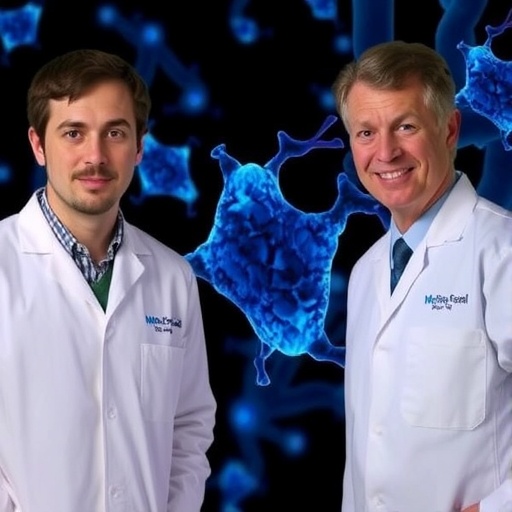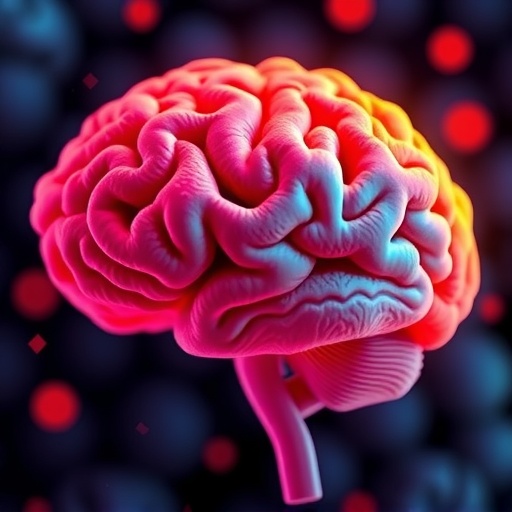In a landmark development poised to reshape the clinical landscape of critical care nutrition, the Global Leadership Initiative on Malnutrition (GLIM) has introduced an updated consensus on diagnosing malnutrition in critically ill adults. Published in the prestigious Journal of Parenteral and Enteral Nutrition, this comprehensive guidance represents a significant evolution in the standardization of malnutrition assessment protocols worldwide. Spearheaded by Dr. Charlene Compher, a leading figure in nutrition science and the Shearer Chair of Healthy Community Practices at Penn Nursing, the guidance leverages a multidisciplinary panel of 36 international experts to provide an authoritative framework that promises to enhance diagnostic precision and patient outcomes on a global scale.
Malnutrition, a complex clinical syndrome often overshadowed by the primary disease processes in intensive care units (ICUs), has long been recognized as an independent risk factor for adverse health outcomes including increased morbidity, prolonged hospitalization, and elevated mortality rates. Despite its known impact, inconsistencies in malnutrition diagnosis have hampered effective interventions. The GLIM guidance aims to rectify this by proposing a unified, evidence-based approach focusing on critical illness—a patient population uniquely vulnerable to nutritional deficits due to hypermetabolism, inflammation, and impaired nutrient assimilation.
Central to the updated GLIM criteria is the dual consideration of phenotypic and etiologic factors. Phenotypic criteria encompass observable clinical manifestations such as unintentional weight loss and reduced muscle mass, which reflect the patient’s current nutritional state. Etiologic factors, on the other hand, consider underlying causes including systemic inflammation and insufficient dietary intake, both of which are prevalent in critical illness. This balanced framework enhances diagnostic sensitivity by recognizing the multifactorial etiology of malnutrition rather than relying solely on static nutritional markers.
One of the pivotal recommendations highlights the urgency of early nutritional assessment in critical care settings. Patients admitted to ICUs should undergo thorough evaluation for pre-existing malnutrition ideally within the first 48 hours. Recognizing the logistical challenges inherent in acute settings, the guidance allows a grace period extending to four days when immediate assessment is not feasible. This temporal benchmark underscores the necessity of prompt identification to facilitate timely and targeted nutritional support interventions, which have been shown to attenuate catabolic processes and improve clinical trajectories.
The guidance further emphasizes the importance of dynamic and ongoing reassessment of nutritional status throughout the critical care continuum. Re-evaluations are advised at intervals of 7 to 10 days, a cadence designed to capture the evolving nutritional needs and recovery progress of patients subjected to intensive medical and nutritional therapies. This iterative approach acknowledges the fluidity of nutritional status in critical illness, influenced by fluctuating inflammatory responses, organ function, and metabolic demands.
In addition to standard anthropometric evaluations, the GLIM panel advocates for the assessment of muscle mass using validated tools as early as practicable and on a follow-up basis. Techniques such as ultrasound, bioelectrical impedance analysis, and computed tomography have gained traction as instrumental modalities in quantifying muscle depletion—a cardinal feature of malnutrition that correlates with impaired functional status and poorer outcomes. By incorporating muscle mass evaluation, clinicians can detect sarcopenia more accurately, enabling nuanced intervention strategies extending beyond mere caloric supplementation.
The procedural recommendation to reassess nutritional status prior to ICU discharge and at subsequent outpatient visits reflects a holistic patient-centered paradigm. Nutritional rehabilitation is recognized as a continuum that extends beyond the critical phase, involving ongoing monitoring to prevent relapse or deterioration during recovery. Integrating nutrition assessments into follow-up care designs a safety net that may reduce readmissions and support sustained functional recovery.
Dr. Compher articulates that these guidance statements offer an essential blueprint for transforming clinical nutrition practice through improved assessment and management protocols. The delineated criteria aim not only to direct bedside clinical decisions but also to harmonize data collection methodologies in research frameworks. Standardization in malnutrition diagnosis will facilitate comparability across studies, accelerate evidence accumulation, and foster innovation in therapeutic interventions for critically ill populations.
The global collaboration embodied by GLIM demonstrates a concerted effort among leading nutrition societies to address a pervasive yet under-recognized healthcare challenge. The updated consensus reflects advances in nutritional science, diagnostics, and critical care medicine achieved over the past five years, and it embraces emerging technologies that enhance clinical applicability. Professionals engaging with this guidance can expect to deliver more precise nutritional care, tailored to the complex pathophysiology of critical illness.
In the broader spectrum of healthcare, these recommendations are poised to influence policy development, clinical training, and resource allocation. By embedding malnutrition diagnosis into quality metrics and care standards, institutions can prioritize nutritional care and potentially reduce the financial and human burden associated with malnutrition-related complications. Such systemic integration exemplifies the commitment to holistic wellness, recognizing nutrition as a cornerstone of recovery convalescence.
Furthermore, the guidance elucidates the critical interplay between inflammation and nutritional status, spotlighting the etiologic facet of the GLIM criteria. Inflammatory processes not only exacerbate nutrient deficits but also interfere with metabolic pathways, complicating traditional nutritional interventions. Addressing inflammation as a key element in malnutrition diagnosis facilitates more nuanced clinical pathways, such as anti-inflammatory therapies congruent with nutritional support.
This consensus update is also timely in the context of an aging global population and the increasing prevalence of chronic illnesses coexisting with acute critical episodes. The aged demographic, often presenting with baseline nutritional vulnerabilities, stands to benefit significantly from enhanced screening and intervention algorithms. Tailored nutritional strategies documented through the GLIM criteria promise to mitigate frailty and enhance resilience against critical illness sequelae.
In conclusion, the GLIM initiative’s 5-year update, led by Dr. Charlene Compher and her distinguished colleagues, sets an unprecedented standard for diagnosing malnutrition in critically ill adults. By synthesizing multifaceted clinical insights into an actionable framework, the guidance empowers clinicians to identify, monitor, and address malnutrition with renewed rigor and effectiveness. The ripple effects of this advancement are anticipated to reverberate across clinical care, research, and global health policy, heralding a new era in nutritional stewardship for the most vulnerable patients.
Subject of Research: Diagnosis and management of malnutrition in critically ill adult patients
Article Title: GLIM consensus approach to diagnosis of malnutrition: A 5-year update
News Publication Date: 14-Apr-2025
Web References:
Journal Article DOI: 10.1002/jpen.2756
Penn Nursing Website
Profile of Charlene Compher
Image Credits: Penn Nursing
Keywords: Nursing, Malnutrition, Critical Illness, Nutrition Assessment, Muscle Mass Evaluation, Inflammation, ICU Nutrition, Clinical Guidelines, Nutritional Science
Tags: adverse health outcomes malnutritioncritical care nutrition standardscritically ill adults nutritionDr. Charlene Compher nutritionevidence-based malnutrition approachGlobal Leadership Initiative on MalnutritionICU patient nutrition challengesJournal of Parenteral and Enteral Nutritionmalnutrition assessment protocolsmalnutrition diagnosis guidelinesmultidisciplinary panel on malnutritionnutritional deficits in critical illness





